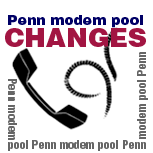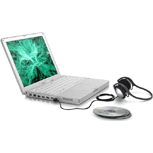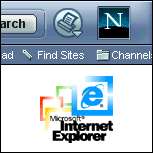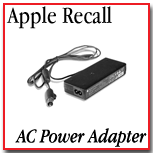
Computing News 2001-2002
Information about remote access to PennNet
Penn Express Modem Pool to be Discontinued on
June 30, 2002

Penn's Express Modem Pool will be discontinued on June 30, 2002. The
termination plans were first announced two years ago, when the regular
modem pool was discontinued and users were directed to commercial ISP
services for remote access to PennNet and the Internet. Since that time,
the Express Pool has been continued as a transitional service for the
convenience of the Penn community. The Express Pool uses aging technology
and does not provide the data transfer speeds that ISPs offer and that
are required to take advantage of many online services.
The termination of the Modem Pool will affect about 1,200 individuals,
most of whom use the service sporadically, rather than as their primary
means of accessing the Internet from off-campus. Those using the Express
Modem Pool as their primary ISP can learn about alternatives at the remote
access web page at www.upenn.edu/computing/remote.
The web site provides information on how to get assistance with making
the transition. A useful chart comparing service options and prices is
available at www.upenn.edu/computing/remote/help_chart.html.
--Mike Lazenka, IT Project Leader, ISC Technology Support Services (April
17, 2002)
Hewlett-Packard Inkjet Power Cord Recall Program
In cooperation with the U.S. Consumer
Product Safety Commission, Longwell Electronics is recalling AC power
cords shipped with certain inkjet printers manufactured by Hewlett-Packard.
The plug, which connects the power cord to the printer, may crack, exposing
live electrical contacts and could result in electric shock or electrocution.
HP and Information Systems & Computing (ISC) recommend that users,
upon positive identification, stop using the power cord immediately.
The recall is isolated to Longwell "LS-7C" gray two-prong power cords.
The cords were shipped with certain Hewlett-Packard DeskJet and Photosmart
printers in the United States and Canada from April 2001 through January
2002. HP has instructions
on how to determine if you have a defective power cord and is offering
a free replacement. Affected individuals may call HP at 1-877-917-4378,
24 hours a day, or order a replacement online.
For more detailed information, see the Hewlett-Packard
Inkjet Power Cord Recall Program page.
--Mark Aseltine, Executive Director, ISC Technology Support Services
(March 12, 2002)
Security Alert: Universal Plug & Play Security
Vulnerability In Windows XP

Windows XP, Microsoft's
newest version of Windows, contains a serious flaw that allows hackers
to steal or destroy a victim's data files across the Internet or implant
rogue computer software. The company released a free fix on December 20,
2001.
The risk to XP users is unprecedented because the vulnerability allows
hackers to assume control of all Windows XP operating system software
if the Windows XP workstation is connected to the Internet.
The Windows XP problems affect a feature that uses Internet protocols
to allow devices such as computers, scanners and printers to automatically
discover one another so they can communicate. The feature, called "Universal
Plug & Play," is activated by design in every copy of Windows
XP and can be added manually to earlier versions of Microsoft's Windows
software, specifically Windows 98, Windows 98 Second Edition, and Windows
Millenium Edition (Windows ME).
Microsoft has made a free
fix for both Windows XP Home and Windows XP Professional available
on its Web site. Information Systems & Computing (ISC) and Microsoft
strongly recommend that every Windows XP user apply the
patch immediately. Customers using Windows 98, Windows 98 Second Edition,
and Windows ME with the "Universal Plug & Play" service
running should use the same patch. This vulnerability does not
exist under Windows 95, Windows NT Workstation 4.0, or Windows 2000 Professional.
For more detailed information, see the Universal
Plug & Play Security Vulnerability page.
--Mike Lazenka & Nicholas Allen, ISC Technology Support Services
(December 21, 2001)
Apple’s iPod

On October 23, 2001, Apple introduced the iPod, a significant advance
in portable MP3 and music players. Lightweight (6.5 ounces), small (about
the size of a deck of playing cards), fast, and easy to use, the iPod
offers a superior music listening experience, along with real and usable
features such as a 1,000+ song capacity and up to 10 hours of battery
life.
Features & Specifications:
- Support for MP3, variable bit rate MP3, AIFF, and WAV format music
files
- 5 GB storage, usable in FireWire (IEEE 1394) disk mode
- Built-in 6-pin FireWire interface for data transfer and recharging
battery
- Up to 10 hours of life from a built-in rechargeable lithium-ion battery
- Skip-free, 20-minute data buffer
- Upgradeable firmware for bug fixes, future music formats, or added
functionality
- 2-inch, 160 by 128 pixel, 102 dpi backlit display
- 6.5 ounces; 2.4 by 4.0 by 0.8 inches
Interface & Battery
With the iPod's scroll-wheel you can access your music collection by
artist, title, and song. Through one-handed operation you can navigate
through menus, choose your song, stop, reverse, or fast-forward through
the song, or set preferences such as turning on the shuffle mode or the
backlight. The bright backlight illuminates a high-resolution, easy-to-read
display.
Not only can you store lots of your music on the iPod (1,000 or more
MP3s), but you can play that music for up to 10 hours from the built-in
rechargeable lithium-ion battery. The iPod recharges completely in about
3 hours through the FireWire cable while connected to your computer, or
you can plug it in directly to a two-prong power outlet through a special
included adapter.
For more detailed information, see the Apple
iPod page.
--Vern Yoneyama & Kristen Zborowski, ISC Client Services Group (December
14, 2001)
Windows XP (Home & Professional)

Windows XP, released on October 25, 2001, is the latest Microsoft operating
system. Windows XP is currently available in two editions -- Windows XP
Home (designed as a replacement for Windows ME) and Windows XP Professional
(designed as a replacement for Windows 2000 Professional).
Information Systems & Computing (ISC) will support Windows XP for
its clients, including off-campus students, only on new Intel-based
PCs that ship with Windows XP pre-installed. ISC strongly recommends that
all other users adopt a "wait and see" attitude, continuing to use previous
versions of Windows until after the initial bugs in Windows XP are identified
and fixed.
When ISC does recommend an upgrade it will be for workstations with processors
350 MHz or above that have at least 256 megabytes of RAM.
Please refer to ISC's
Windows System Specifications to find out which versions of Windows
are recommended for your Intel-based computer. The full install of Windows
XP uses between 300 megabytes and 1.5 gigabytes of hard disk space, depending
on the type of Intel-based PC and choices made during the install.
For more detailed information, including issues, availability information,
and new features, see the Windows
XP (Home & Professional) page.
--John Mulhern III, IT Project Leader, ISC Technology Support Services
(October 25, 2001)
Apple’s Latest iBook

On October 16, 2001, Apple Computer announced an updated version of their
iBook laptop line. This system, currently available only in white, represents
primarily a speed update to the "consumer portable" portion of Apple's
four-part product line.
The new iBook is approximately 2 pounds lighter than the previous version,
weighing in at 4.9 lbs in its base configuration. It comes in three standard
configurations and can be custom configured at Penn's
Apple Store.
For more detailed information, including configuration, technical issues,
and recommendations, see the Apple's Latest
iBook page.
--Robert L. DeSilets, Jr., IT Support Specialist, ISC Provider Desk (October
16, 2001)
Mac OS X version 10.1
Mac OS X version 10.1, released on September 25, 2001, is the latest
version of Apple’s flagship operating system. Mac OS X version 10.1
is the first significant update to Mac OS X.

Information Systems & Computing (ISC) will support Mac OS X version
10.1 for its clients, including off-campus students, only
on new Macintoshes that ship with Mac OS X version 10.1 pre-installed.
ISC strongly recommends that all other users adopt a "wait and see" attitude,
continuing to use previous versions of the Mac OS (including Mac OS X
version 10.0.4) until after the initial bugs in Mac OS X version 10.1
are identified and fixed.
When ISC does recommend an upgrade it will be for PowerPC G3s or above
that have at least 128 megabytes of RAM. Please refer to ISC's
Mac OS System Specifications
to find out which versions of the Mac OS are recommended for your Macintosh
computer. The full install of Mac OS X version 10.1 uses between 300 megabytes
and 1.5 gigabytes of hard disk space, depending on the type of Macintosh
and choices made during the install.
For more detailed information, including issues, availability information,
and new features, and technical issues, see the Mac
OS X version 10.1 page .
--John Mulhern III, IT Project Leader, ISC Technology Support Services
(October 2, 2001)
PennConnect CD-ROM Network Applications Fall 2001

Information Systems and Computing has released the PennConnect CD-ROM
for fall 2001, which contains the recommended networking and anti-virus
software for off-campus students, staff, and faculty, as well as on-campus
ResNet students. The CD-ROM includes the recommended Web browsers and
other Internet applications including clients for terminal emulation,
e-mail, and NetNews.
The CD-ROM features a graphical interface that guides users through installation
and configuration of the software. The CD-ROM is cross-platform and works
on Mac OS 8.x/9.x, Mac OS X, Windows 95/98, Windows ME, Windows NT, and
Windows 2000 Pro.
Copies are available for many faculty and staff directly from their local
support provider or at the Computing Resource Center, Suite 202, Sansom
Place West, 3650 Chestnut Street. The CRC's hours are M-F, 1-4:30. The
software is also available for download via the network. The Supported
Products page provides additional information and download links to
the software.
--Mike Lazenka, IT Project Leader, ISC Technology Support Services (August
28, 2001)
Problems with browser upgrades: Netscape 6.x,
Internet Explorer 5.5, & Internet Explorer 6.0

Netscape 6.x, Internet Explorer 5.5, & Internet Explorer 6.0 introduce
significant problems for University users. Information Systems & Computing
(ISC) does not currently support these new versions and strongly
suggests staying with the previous versions of the browsers, Netscape
Communicator 4.77 and Internet
Explorer 5.0/5.01/5.1.
For detailed information about the new browser versions and the issues
relevant to Penn users, see the Problems
with browser upgrades page.
John Mulhern III, IT Project Leader, ISC Technology Support Services
(August 24, 2001)
Mac OS 9.2.1

Mac OS 9.2.1 (code name "Limelight"), released on August 21, 2001, is
the latest version of Apple's 'Classic' operating system. It is intended
primarily as a bug fix and compatibility update, with few new features.
Mac OS 9.2.1 is a reference release closely related to Mac OS 9.2, which
shipped with some of the new Power Macintosh G4s announced in July. Like
Mac OS 9.1, Mac
OS 9.2.1 is intended to help ease the transition to Mac
OS X.
Information Systems & Computing (ISC) will support Mac OS 9.2.1 for
its clients, including off-campus students, only on new
Macintoshes that ship with Mac OS 9.2.1 pre-installed. ISC strongly
recommends that all other users adopt a "wait and see" attitude,
continuing to use previous versions of the Mac OS until after the initial
bugs in Mac OS 9.2.1 are identified and fixed.
When ISC does recommend an upgrade, it will be for PowerPCs 233
MHz or above that have at least 64 megabytes of RAM. Please refer
to ISC's Mac OS
System Specifications to find out which versions of the Mac OS are
recommended for your Macintosh computer. Mac OS 9.2.1 requires between
320 megabytes and 520 megabytes of hard disk space, depending on the type
of Macintosh and choices made during the install.
For more detailed information, including issues, availability information,
and new features, and technical issues, see the Mac
OS 9.2.1 page .
--John Mulhern III, Bob DeSilets, Jr., Steve Strawser, and Vern Yoneyama,
ISC Technology Support Services (August 22, 2001)
Apple AC Power Adapter Recall Program
In cooperation with the U.S. Consumer Product Safety Commission, Apple
is voluntarily recalling certain AC power adapters that were sold for
use with some models of PowerBook notebook computers, including some of
those in the University of Pennsylvania's 1998 and 1999 Fall Truckload
Sales. Apple states that these power adapters can overheat, potentially
causing them to become very hot, release smoke, and possibly catch fire.

The recalled AC power adapters can be identified by the label located
on the side, which reads, in part, "Macintosh PowerBook 45W AC Adapter"
and "Model Number: M4402." They were sold with Apple's PowerBook G3 notebook
computers and were also sold separately, including as replacement power
adapters. The power adapters were shipped to customers between May 1998
and March 2000.
For more detailed information, including a link to instructions on how
to visually inspect your AC power adapter to determine if you are eligible
to participate in the recall, see the Apple
AC Power Adapter Recall Program page.
--Mark Aseltine, Executive Director, ISC Technology Support Services
(July 11, 2001)
|